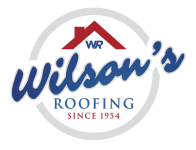Signs of Trouble
Being proactive when it comes to your roof’s maintenance helps to address problems before they result in larger issues such as water damage to the interior of your home.
It is important to be aware of the condition of your roof, but if you are unsure of what signs to look for, you can review the following list of common issues:
Things to consider when having your roof re-done
Terminology
A package of shingles usually consisting of 19 to 22, covering approximately 32 square feet of roof surface.
The change of water from vapour to liquid when warm, moisture-laden air comes in contact with a cold surface.
That portion of the flashing attached to a vertical surface to prevent water from migrating behind the base flashing.
The open portions of a strip shingle between the tabs.
The structural base for the roof. It is made of wood or plywood.
A vertical opening coming through a sloping roof.
A pipe for draining water from roof gutters.
A noncorrosive, non-staining material used along the eaves and fascia to allow water run-off to drip clear of the fascia wood and roof deck.
A mandatory safety course for anyone wishing to work in roofing and many other areas of construction.
Pre-formed flange placed over a vent pipe to seal the roof around the vent pipe opening. It is also called a vent sleeve.
A corrosion-resistant sheet metal used in waterproofing roof penetrations or valleys, or vertical transitions on a roof or roofing system.
The triangular part of a building’s end wall, and also a type of roof.
Wire/cable is threaded through downspouts and eaves and powered during the winter months in order to provide enough heat to prevent ice from forming and eliminate ice back-up or ice damming.
The outside angle formed by the meeting of 2 sloping sides of a roof that have their supports running in different directions.
A type of roof containing sloping planes of the same pitch on each of 2 sides, contains no gables.
Shingles used to cover the inclined external angle formed by the intersection of 2 sloping roof planes.
Occurs during particular weather patterns of freezing rain, snow and mild to extremely low temperatures. Ice forms at the bottom of downspouts or eaves and builds up to the roof, barricading the drainage system. When the temperature rises and the snow on the roof melts, the water runs into the ice dam and is forced to run horizontally or to pool, often resulting in leaks.
Any of the small timbers or metal beams ranged parallel from wall to wall in a structure to support a floor or ceiling.
Strip shingles containing more than one layer of tabs to create extra thickness. It is also called three-dimensional shingles or architectural shingles.
A type of roof on which there are 2 slopes on each side, with the lower slope much steeper than the upper one.
Narrow strip of non-corrodible metal used at the rake and eave to facilitate water runoff.
Shingles consisting of a single, solid tab with no cut outs.
Method of valley construction in which shingles on both sides of the valley are trimmed along a chalk line snapped on each side of the valley. Shingles do not extend across the valley. Valley flashing is exposed (recommended).
That portion of the roof structure that extends beyond the exterior walls of a building or structure. It is typically longer in length than eaves (2 inches of shingles that hangs into the eaves).
The angle of steepness of a roof, rise over the run, e.g. a 4 and 12 roof means that for every 12 horizontal inches, the roof slope rises (goes up) 4 inches.
The line of intersection at the top of a roof between opposite slopes or sides.
A breathable barrier between the ridge and the cap shingles allowing air to vent from the attic through the peak, effectively used on cathedral ceilings.
Slight differences in shingle colour that may occur as a result of normal manufacturing operations.
The finished underside of the eaves.
100 square feet of roof area.
Asphalt roofing, applied at the eaves that provide protection by filling in the spaces under the cut outs and joints of the first course of shingles.
Flashing application method used where a vertical surface meets a sloping roof plane.
A second roof deck built on top of the original roof deck, separated by 2 x 2” strapping. It provides more air-spacing between the home and nature’s elements, and is commonly used to correct condensation issues.
The portion of a shingle set off by the cut outs. It is also the part of a shingle that is exposed to the weather.
The most popular type of asphalt shingle – usually 12” x 36” in size with 3 tabs.
A large spinning vent used to provide maximum ventilation. One turbine vent typically provides ventilation equal to 3 standard vents.
The intersection of 2 sloping roofs joining at an angle to provide water runoff
Layer of asphalt-saturated felt (sometimes referred to as tar paper) which is laid down on a bare deck before the shingles are installed. Synthetic underlayment is now most commonly used (e.g. IKO Cool Gray).
